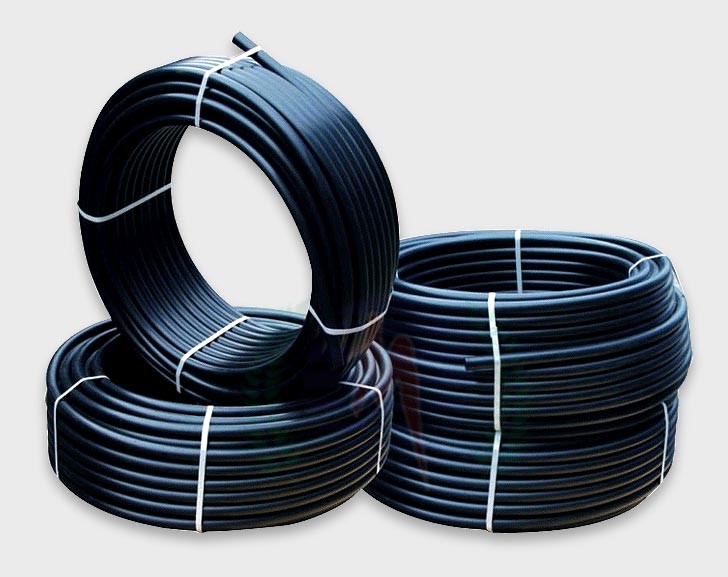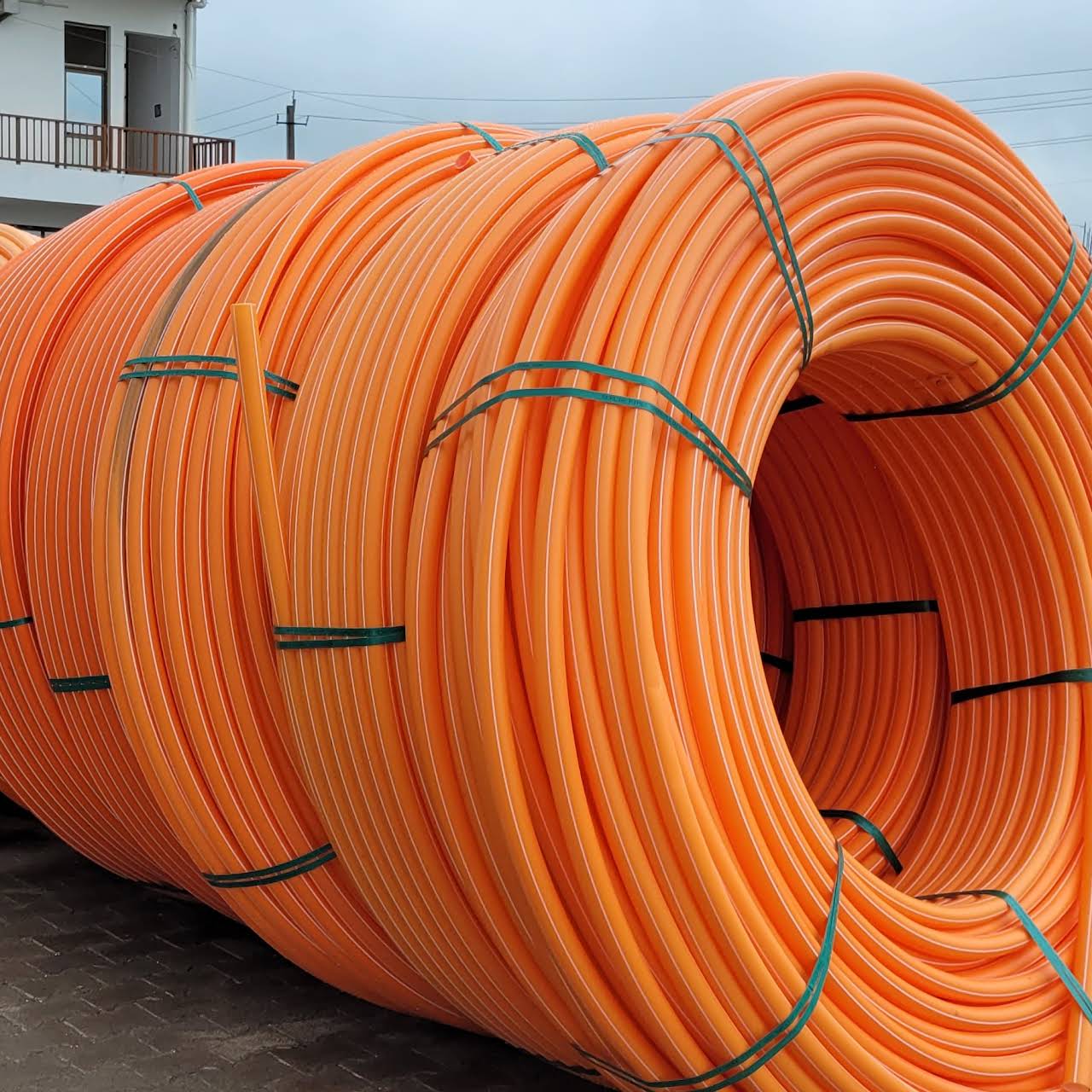Why Texas hdpe pipe manufacturer Is Setting Standards in Modern Infrastructure
Wiki Article
Explore the Manufacturing Process Behind High-Quality HDPE Pipe and Its Applications
The production procedure of high-quality HDPE pipelines is complex and methodical. It starts with the option of raw products that enhance performance. Following this, ethylene goes through polymerization to create resin, which is then formed via extrusion. Quality control is critical, guaranteeing that the last product fulfills rigorous standards. Nevertheless, the journey of HDPE pipelines doesn't end with production. Their applications across various sectors reveal a wider significance worth checking out.Understanding HDPE: Characteristics and Advantages

High-density polyethylene (HDPE) is a versatile thermoplastic understood for its sturdiness and resistance to various environmental variables. This product displays exceptional tensile stamina, making it appropriate for requiring applications. Its low-density framework adds to a light-weight item, promoting ease of handling and installment. HDPE also showcases amazing resistance to chemicals, which reduces degradation when revealed to rough compounds.
The product's reduced wetness absorption additionally enhances its longevity, making it optimal for use in pipelines and tank. Additionally, HDPE is resistant to ultraviolet (UV) radiation, making sure that items maintain their honesty also when subjected to sunshine. Additionally, its flexibility enables the production of intricate shapes without compromising stamina. The eco-friendly nature of HDPE, often acquired from recycled materials, includes in its allure, promoting sustainable techniques in manufacturing. On the whole, these properties and advantages make HDPE a favored choice for numerous industrial and customer applications.
Basic Material Option for HDPE Manufacturing
The choice of resources for HDPE manufacturing is important to confirm the final item fulfills the preferred requirements and high quality standards. High-density polyethylene (HDPE) is largely created from polymerized ethylene, obtained from fossil fuels such as gas or crude oil. The top quality of these feedstocks substantially influences the mechanical and thermal properties of the final HDPE.Ingredients additionally play a substantial duty in boosting HDPE's efficiency, consisting of anti-oxidants, UV stabilizers, and colorants, which improve durability and resistance to environmental aspects. The choice process need to take into consideration not just the chemical make-up of the raw products yet additionally their handling features to assure reliable production.
Additionally, the sourcing of resources must prioritize sustainability and compliance with ecological policies, as accountable methods are crucial in today's market. Ultimately, mindful resources selection lays the structure for generating high-quality HDPE pipes suitable for varied applications.
The Extrusion Process: Forming HDPE Pipe
The extrusion procedure plays an important duty fit HDPE pipes, starting with careful material prep work methods that guarantee ideal circulation and consistency. Equally important is the layout of the die, which straight influences the final measurements and surface area quality of the pipeline. Together, these elements contribute greatly to the performance and high quality of HDPE pipe manufacturing.Material Prep Work Methods
Effective manufacturing of HDPE pipelines begins with meticulous material prep work techniques, particularly the extrusion process. During this stage, high-density polyethylene resin is very first dried out to remove moisture, making sure suitable circulation attributes. The material is after that fed into the extruder, where it undertakes home heating and melting, changing right into a viscous state. This home heating procedure is thoroughly regulated to maintain the product's stability and efficiency. The molten HDPE is required via a die, shaping it into a continuous pipe type. Appropriate temperature level administration during extrusion is crucial, as it straight influences the product's residential properties and the final item top quality. When shaped, the HDPE pipe is cooled down and reduced to defined sizes, all set for succeeding handling and applications.Die Style Importance
Precision in die layout plays an important duty in the extrusion process of HDPE pipes. The die functions as the last shaping tool, straight affecting the pipeline's dimensions, wall density, and surface coating. A properly designed die assurances uniform material flow, lowering issues such as abnormalities and vulnerable points. The geometry of the die need to be enhanced to accommodate the particular buildings of HDPE, including its thickness and thermal habits during extrusion. In addition, the cooling price of the material as it travels through the die can substantially influence the pipeline's architectural honesty. Spending in sophisticated die innovation is crucial for producers aiming to generate high-quality HDPE pipelines that meet industry requirements and client assumptions.High Quality Control Measures in HDPE Production
Numerous elements affect the quality of HDPE pipeline manufacturing, reliable high quality control steps are essential to ensure consistency and dependability in the final item (hdpe pipe suppliers Midland TX). Key quality assurance techniques include rigorous product evaluation, confirming that the raw polyethylene meets well established requirements for pureness and thickness. Throughout the extrusion procedure, specifications such as temperature level, stress, and cooling time are very closely kept track of to preserve dimensional precision and architectural stabilityAdditionally, post-production testing is essential; producers frequently conduct hydrostatic examinations to evaluate the pipeline's toughness and resistance to pressure. Visual inspections for surface area defects additionally enhance top quality guarantee. Qualification from pertinent requirements organizations, like ASTM or ISO, provides an great site additional layer of reputation. By implementing these thorough quality assurance procedures, makers can lessen flaws, improve performance, and ensure that the HDPE pipelines fulfill the details requirements of various applications, inevitably leading to consumer contentment and rely on the product.
Applications of HDPE Pipeline Across Industries
HDPE pipelines are utilized throughout numerous markets because of their toughness and flexibility. In water circulation systems, they guarantee reliable delivery, while in wastewater monitoring, they offer dependable solutions for waste transportation. Additionally, farming irrigation networks gain from HDPE's resistance to deterioration and versatility, making it an ideal selection for modern farming methods.
Water Circulation Equipments
A considerable number of industries depend on high-density polyethylene (HDPE) pipelines for reliable water circulation systems. Recognized for their durability and resistance to corrosion, HDPE pipes are widely utilized in community water system networks, farming watering, and industrial applications. Their light-weight nature assists in very easy handling and setup, lowering labor expenses and time. In addition, HDPE pipelines can accommodate numerous stress degrees, making them appropriate for both low and high-pressure systems. hdpe pipe suppliers Midland TX. The flexibility of the product enables seamless assimilation into existing framework, lessening the need for extensive excavation. HDPE's resistance to chemical seeping warranties that the water supplied stays safe and tidy, making it a suitable option for maintaining the quality of safe and clean water across different fields.Wastewater Management Solutions
Reliable water circulation systems also lead the way for innovative wastewater administration options, where high-density polyethylene (HDPE) pipes play a significant function. Prominent for their sturdiness and resistance to deterioration, HDPE pipelines are optimal for transporting wastewater in numerous setups. Their versatility enables simple installation in complex atmospheres, reducing the demand for comprehensive excavation. In addition, HDPE's smooth indoor surface decreases rubbing, boosting flow rates and performance. These pipes are also resistant to chemical leaching, ensuring that impurities do not jeopardize the surrounding setting. Industries, towns, and therapy facilities significantly rely upon HDPE pipelines for their reliability and durability, making them a favored choice for contemporary wastewater administration systems. This adaptability highlights the vital significance of HDPE pipes across many applications.Agricultural Irrigation Networks
Agricultural irrigation networks benefit significantly from using high-density polyethylene (HDPE) pipelines, which provide effective and reputable water distribution to crops. HDPE pipes are lightweight, making them simple to transfer and mount, while their versatility enables various arrangements in diverse surfaces. These pipes demonstrate superb resistance to rust, chemicals, and UV radiation, making sure toughness in harsh agricultural environments. In addition, their smooth indoor surface lessens friction loss, enhancing water circulation and lowering power prices related to pumping. The long life of HDPE pipelines, commonly going beyond half a century, adds to reduce upkeep and substitute expenditures. Subsequently, farmers progressively rely upon HDPE pipes to boost watering effectiveness and promote sustainable farming practices, ultimately bring about improved crop yields and source preservation.Future Fads in HDPE Pipeline Innovation
As the demand for lasting and reliable framework expands, advancements in HDPE pipe technology are poised to transform numerous industries. Emerging fads Find Out More consist of the integration of clever technologies, such as sensors and IoT abilities, which assist in real-time surveillance of pipeline conditions, lowering upkeep costs and preventing leaks. In addition, the growth of advanced manufacturing methods, such as 3D printing, is allowing the manufacturing of complicated, customized pipe layouts more that accommodate certain task needs.In addition, the focus on recycling and circular economic climate practices is driving the advancement of HDPE pipelines made from recycled products, enhancing sustainability. Boosted jointing techniques, such as electro-fusion and mechanical fittings, are likewise enhancing installation efficiency and integrity. Ultimately, the growing focus on ecological policies is pressing producers to adopt greener manufacturing processes, making sure that HDPE pipelines not only satisfy sector requirements but likewise foster an even more sustainable future for infrastructure development.
Regularly Asked Concerns
How Does HDPE Compare to Other Plastic Products?
HDPE surpasses numerous other plastic materials concerning resilience, chemical resistance, and versatility. Its low density and high tensile strength make it ideal for different applications, often going beyond alternatives in both efficiency and durability.What Are the Environmental Impacts of HDPE Manufacturing?
The environmental effects of HDPE manufacturing consist of greenhouse gas discharges, power consumption, and potential contamination from producing processes. In addition, inappropriate disposal can cause soil and water contamination, elevating worries about long-term eco-friendly effects.Can HDPE Water Lines Be Recycled?
Yes, HDPE pipes can be reused. Lots of centers accept utilized HDPE for handling, changing it right into new products. This reusing adds to sustainability efforts, lowering plastic waste while conserving resources and power in the manufacturing cycle.What Is the Life-span of HDPE Water Lines?

Just How Do Temperature Variations Influence HDPE Pipeline Efficiency?
Temperature level variations considerably influence HDPE pipe efficiency, impacting adaptability and stamina. High temperatures can result in softening, while low temperature levels may cause brittleness, inevitably influencing the pipeline's longevity and suitability for numerous applications in varied settings.Report this wiki page